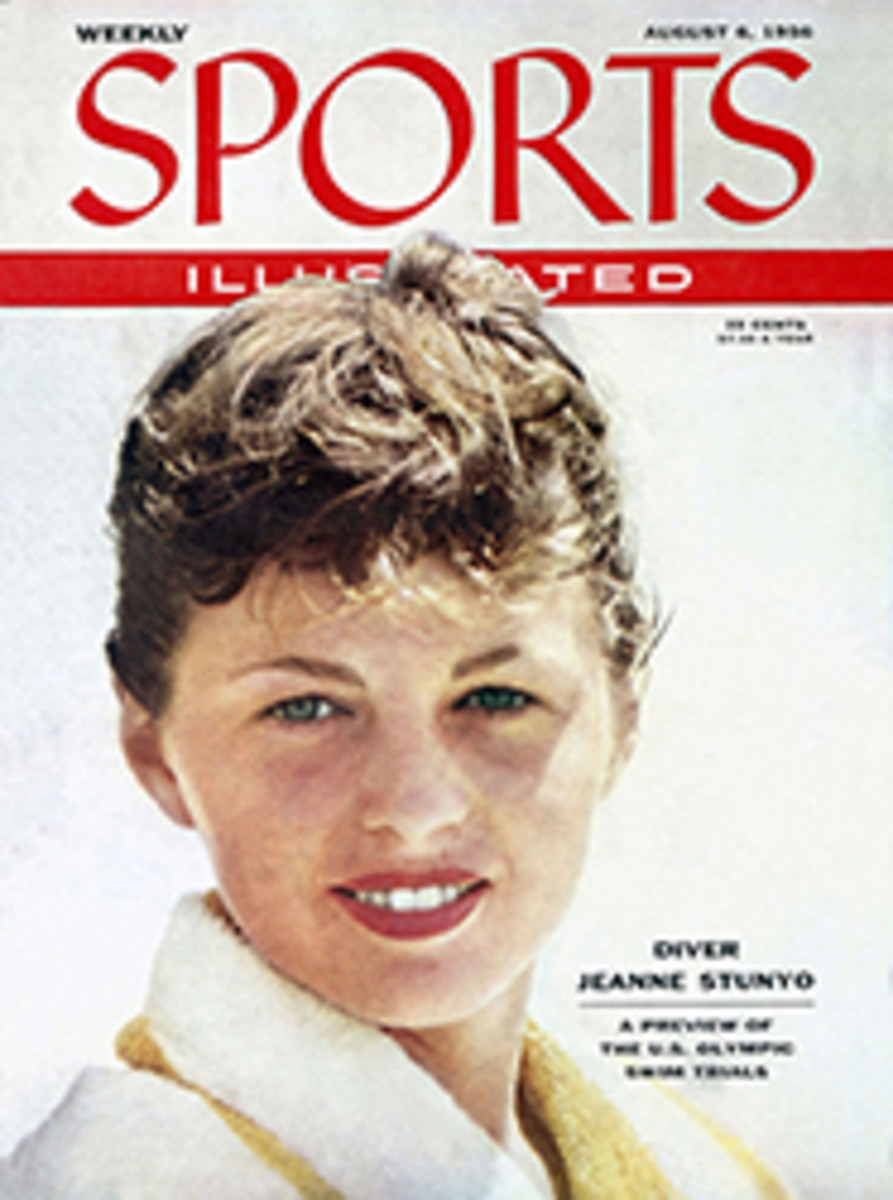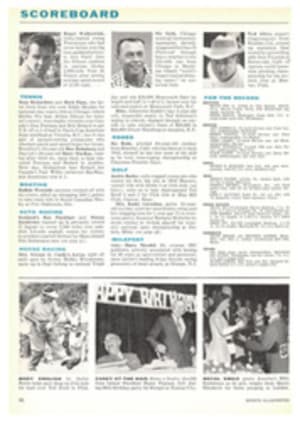
DULUTH PLAYOFF
Among the many fine courses which Donald Ross, that Johnny Appleseed of early American golf course architecture, scattered over the face of the U.S., one of the most pleasantly difficult is the Northland Country Club, which is perched atop a bluff overlooking the city of Duluth and the western tip of Lake Superior. Since Northland lies a little off the beaten path, up to last week it had been selected as the venue of only one prestige-level tournament, the 1946 Western Amateur in which Frank Stranahan and Smiley Quick waged their legendary everything-but-the-kitchen-disposall match. Last week, what with the steel strike settlement still unresolved, not much was stirring on the ore docks beneath the bluff, but up at Northland, after a relatively slumbrous decade, the joint was jumping again.
The course was the scene of the 11th National Women's Open championship which was won by Kathy Cornelius, a 24-year-old pro who looks more like a Smith College student-council leader than the mother of a 2-year-old daughter, after a playoff with Barbara McIntire, an up-and-coming 21-year-old amateur from the University of Toledo, whom many consider the handsomest girl in golf. Watching all the girls go by was a gallery that was large only by regional standards, but which had the distinction of being without a doubt the most hirsute band of spectators ever to congregate on a golf course since the days of young Tom Morris. With the city of Duluth approaching its centennial celebration, more of the local menfolk have grown 1856-style mustaches, sideburns and beards. You never saw so much rough in your life.
Considering how taxing Northland is on the old fibulae—there is one ascent which the natives claim is the equivalent of climbing a 10-story building—it was a little ironic that the lancers of the Royal Sedentary Brigade, who remained planted at the clubhouse, were in the perfect position to witness the crucial action. It took place on the 18th hole, the 72nd of the tournament, a par 5, 410 yards long, which sweeps moderately uphill for some 275 yards, breaks downhill to the bed of a small stream, and then climbs abruptly again to a plateau green some 50 yards beyond the water hazard. When the wind is with the player, as it was on Saturday afternoon, a strong gal can get home with two big woods. Miss McIntire did just this and then holed a tremendous putt across the green for an eagle 3, a three-under-par 71, and a four-round total of 302. Barbara, however, had started that fourth round eight shots behind the leaders, Mrs. Cornelius and Marlene Bauer Hagge, and until late in the afternoon it looked as if one or both of them would come close to breaking 300. Marlene and Kathy had the slight disadvantage of being paired together, though, and it seemed to make them think in terms of match and not medal play. On the last nine, locked in their duel, both dropped a liberal number of strokes to par. Kathy eventually pulled two shots ahead of Marlene and needed only a par 5 on the very birdie-able 72nd to nail down a winning total of 301.
However, on that home hole Kathy mis-hit her tee shot a bit and, out only some 200 yards, she faced the problem of deciding whether to play short of the water hazard or to gamble on carrying it. She chose to play short, but hit a seven-iron much too full, and the ball caught the downslope and bounded into the hazard. She was on in 4 and down in 2 for a 6 and a total of 302 which necessitated the playoff. Even before the results of Kathy's supposed safety shot were evident, most of the gallery seemed to think she could have easily cleared the hazard with a four-wood and her rooters were filled with foreboding when she elected not to go for it. It was all sort of like Billy Joe Patton at Augusta in reverse when, in 1954, the galleries pleaded audibly with that audacious young man not to attempt to carry the water on the 13th and 15th.
The National Women's Open—next year it will have a real showcase setting, Winged Foot in Westchester—is a good tournament that is steadily becoming a better one. The PGA championship, as the recent 1956 edition made remarkably clear, has also been undergoing a marked change. Here is a once-splendid event that has been gradually losing its historic luster and will surely lose all of it unless the PGA officialdom completely revises its antique regulation which serves only to gratify some errant idea of "tradition" in the minds of reactionary PGA regional gauleiters and to bar from the event many of the young stars the public expects to see in a national championship. The PGA has also lost sight of the primary fact that you cannot expect to have the stature of a championship without a championship course.
At the Blue Hill Country Club outside of Boston, where the 1956 PGA was held, there were four or five first-class holes, but the course just didn't have the over-all character (or the condition) to make it a true test of championship shotmaking. Jack Burke won the title, in effect, when he raced off on a burst of five birdies against Ted Kroll on the third nine of their 36-hole final. The first of Jack's birds came on a par 3 which required a substantial four-iron, but he scored the others on holes that were rather soft pickings for a major tournament. The PGA championship should, of course, occupy a status comparable to the Masters, but if the powers that be prefer to make it into just another summer circuit stop they are well on the road to success.
Unchallenging course or not, in winning at Blue Hill, Jack Burke played some wonderful stuff including the stoutest clutch golf of his career. I am thinking particularly of his rousing semifinal match against Ed Furgol which Jack pulled out on the 37th with a grand four-iron approach after he had all but won it on the 36th by cracking an absolutely beautiful two-iron seven feet from the pin on that 498-yard par 5. (Jack missed that putt after Ed had holed for a birdie from 11 feet, hence the 37th.) It takes a pretty good golfer to hit a two-iron right even on the practice tee, and if you have the nerve and the skill to hit one right under pressure, then, as Kipling lost no time in pointing out, you'll be a man, my son.
ILLUSTRATION
"What's so unusual about that? Have you ever known me to reverse a decision?"

